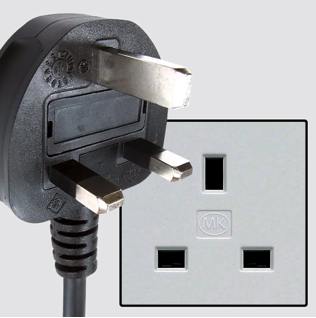Oman / Sultanate of Oman / سلطنة عُمان – Let’s explore here

What’s it like in Oman?
Oman is a fantastic country in western Asia, with a very long and rich history. It is the oldest continuously independent state in the Arab world. The capital, Muscat, has been an important trading post for millennia.
Oman is actually split into several parts – the mainland, an exclave (the Musandam Peninsula) separated by the UAE , and an enclave (Madha) contained by the UAE. Within the Madha enclave, is yet another enclave, called Nawha, that belongs to the UAE!
It’s a very hot and very dry country that’s dominated by a vast desert plain bordered by mountains in the north and south east. The highest point is Jebel Shams, in the north of the country, at 9,902 ft (3,018 m) above sea level. Oman’s neighbours include Saudi Arabia, United Arab Emirates and Yemen.
The population of Oman is around 5 million people (2021), about ⅓ of whom live in the capital, Muscat. It relies heavily on its oil reserves, and more than half the workforce are foreign nationals.

A bit about the history of Oman
Early History and Ancient Civilisations
Oman has a long history dating back to ancient times. The region was home to several important civilisations, including the Magan civilization, which thrived around 3000 BC. Magan was known for its copper production, which was traded with Mesopotamia and the Indus Valley. Oman’s location at the south eastern tip of the Arabian Peninsula made it an important hub for trade, especially in the Indian Ocean. Over time, the area was influenced by various empires, including the Persians, Greeks and Romans.
Islamic Period
In the 7th century, Oman became one of the first regions in the Arabian Peninsula to adopt Islam. The spread of Islam was peaceful, with many Omanis converting through trade and missionary activity rather than conquest. Oman’s early Islamic history was marked by a unique form of governance. Omanis established an independent political system, rejecting centralised caliphates and instead following a form of Ibadism, a branch of Islam that emphasises independence and religious tolerance. Under various dynasties, Oman was able to maintain its autonomy. The Al Julanda dynasty (7th–9th centuries) and the Al Busaid dynasty, which continues to rule Oman today, were particularly important in the formation of Omani political structure.
Portuguese and Persian Influence
In the 16th century, Oman came under attack from Portuguese forces who sought to control the strategic shipping routes in the Arabian Sea. The Portuguese occupied Oman’s coastal cities, including Muscat, but Omani forces successfully expelled them by 1650. The Portuguese occupation was followed by a brief period of Persian dominance, but the Omanis regained full control over their territory in the 18th century.
The Al Busaid Dynasty
The Al Busaid dynasty, which began in the mid 18th century, has ruled Oman continuously. In 1749, Ahmad bin Said founded the dynasty, which brought stability to the region after years of turmoil. The dynasty’s rule is characterised by its ability to navigate complex relationships with neighbouring powers, including the British and the Portuguese.
Oman in the 19th Century
During the 19th century, Oman maintained an important role as a maritime power. The Omanis controlled much of the east African coast, including parts of modern day Kenya and Zanzibar. Oman was heavily involved in the Indian Ocean slave trade, although the British, who established a strong presence in the region, pressured Oman to halt the trade by the end of the century.
British Influence and Protectorate
By the 19th century, Britain had established itself as a dominant power in the region, and Oman entered into a series of treaties with Britain. While Oman retained its sovereignty, British influence grew, especially in military and foreign affairs. Oman remained a British protectorate in many respects, though it retained its independence in internal matters.
Modernisation and Independence
In the 20th century, Oman began to modernise under the leadership of Sultan Qaboos bin Said, who came to power in 1970 after a palace coup. Sultan Qaboos focused on transforming Oman into a modern state by improving infrastructure, healthcare and education. He also worked to maintain Oman’s neutrality in regional conflicts, and he pursued policies of peace and reconciliation. Oman’s economy was diversified, with oil becoming a major source of revenue. Sultan Qaboos remained in power for nearly 50 years, and his reign was marked by efforts to balance tradition with progress.
21st Century and Recent Developments
Sultan Qaboos’s death in 2020 marked the end of a historic era in Oman. Sultan Haitham bin Tariq, his cousin, succeeded him, inheriting the mantle of leadership in a time of significant challenges. Oman faces the challenges of diversifying its economy away from oil, addressing unemployment, and continuing to modernise its infrastructure. Oman has also played a role in regional diplomacy, particularly in its relationships with Iran and its efforts to mediate between conflicting parties in the Middle East.
Oman’s Foreign Relations
Oman has pursued a policy of neutrality and non-interference in the internal affairs of other countries. It has maintained good relations with all of its neighbours, including Iran, Saudi Arabia and the United Arab Emirates, and has often acted as a mediator in regional disputes. Oman’s foreign policy is rooted in its desire to maintain peace and stability in the Gulf region.

Oman road trip
On our current Omani road trip we’ll be travelling from Yemen towards Muscat before moving on to UAE. Hopefully this will improve our knowledge of this intriguing and beautiful country, and enable us to meet some interesting people. We’ll be updating this page at that time – don’t forget to check back 🙂
Map of Oman

What’s it like to drive in Oman?
They drive on the right hand side of the road in Oman. In the main, roads are quite good, although there are many unsurfaced dirt tracks. Driving standards are also quite good.
Do you require an international driving permit in Oman?
We’ve created a dedicated page to driving abroad, which answers this question, and more, which you might find helpful.
Can you use your UK driving license when driving through Oman?
We’ve created a dedicated page to driving abroad, which answers this question, and more, which you might find helpful.
Do I need a carnet de passages to drive in Oman?
A carnet de passages is required to overland in Oman. We’ve created a dedicated page to driving abroad, which answers this question, and more, which you might find helpful.
What currency do they use in Oman?
In Oman they use the Omani rial, or riyal. Cash is widely used. The use of credit / debit cards is widely accepted. Travellers cheques are also widely accepted. There are many ATMs throughout the country.
You should make yourself aware of the amount that your bank charges you for using credit and debit cards abroad. Often credit cards are cheaper for purchasing items directly, and for withdrawing cash from ATMs.
What language do they speak in Oman?
They speak Arabic in Oman. English is also spoken by some, particularly in the South.
What time zone is Oman in?
Remember, when you’re planning your next trip to take a look at what time zone it’s in.
Do I need a visa to visit Oman?
We’ve created a dedicated, more comprehensive page on visas, which you should find helpful. Check it out!
Is wild camping legal in Oman?
Yes, wild camping is fine in Oman.
What plug / socket type do they use in Oman?

In Oman they use plug / socket type G.
Health issues in Oman
Is it safe to drink water in Oman?
Yes, it is safe to drink tap water in Oman. Bottled water is also readily available throughout the country.
What vaccinations are required for Oman?
This NHS website is kept up to date with all relevant information on vaccinations in Oman.
Phones in Oman
What is the country calling code for Oman?
The country calling code for Oman is +968
What are the emergency phone numbers in Oman?
- The emergency number for police in Oman is: 9999 / 112
- In Oman, the emergency number for ambulance is: 9999 / 112
- The emergency number for fire in Oman is: 9999 / 112
If you’ve got some useful info that you’d like to share, let us know!
And don’t forget to check out all the other pictures!
